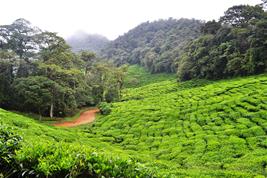22.08.2018

The Working Group SUSLand, in collaboration with the Swedish University of Agricultural Sciences (Uppsala, Sweden), has successfully submitted a Correspondence in Nature titled: "Colombia's rural development must honour peace agreement". Within the WWF SuLu2 project, this contribution aims to further the investigation of sustainable land use management practices. It does this by raising awareness about the need for sustainable land use guidelines for the areas included in the First Agricultural Frontier in Colombia, the first milestone of the peace agreement.
During June's International Fair of the Environment (FIMA 2018) in Bogotá, Colombian president Santos (to leave office in August) signed a resolution defining the borders of the National Agricultural Frontier (NAF). Opening 35% of the national territory for agricultural interventions raises concerns internationally. The Rural Agricultural Planning Unit (UPRA) identified more than 40 million hectares (35% of Colombia's surface) that are ought to push the development of agricultural, livestock, forestry and fisheries activities. The definition of the Agricultural Frontier´s borders is part of the first section in the peace agreement signed with the FARC in Havana (August 24th, 2016), which refers to the structural transformation of national land, along with the protection of environmental areas.
But reality taught us, that most of the previous inaccessible areas are already being targeted by loggers, miners and agribusiness industries, as only in 2016 deforestation increased by 44% (https://www.nature.com/articles/d41586-018-05397-2). At present, 7.6 million hectares are under cultivation in Colombia (20% of the NAF). As of yet there are no specific guidelines to which use the remaining 80% will be destined. Agroecological farming, alongside with traditional production systems (i.e. cattle ranching in flooded savannahs in the Orinoquía region) are not promoted nor contemplated in the new resolution, opening doors to more competitive and intensive forms of land exploitations.
The concerning environmental and social effects that could be generated by the implementation of the NAF are a threat to the implementation of the peace agreement itself. While being sold as “sustainable rural development”, in a country where only 16% of the soil is legally protected against environmental depredation this resolution might actually lead down a dangerous path. The definition of the borders of the Agricultural Frontier must promote reconciliation alongside sustainable rural development in Colombia. The NAF risks failing in both.
The SUSLand correspondence in Nature is a wake-up call for policy makers, scientists and researchers to monitor the implementation of the NAF with in-depth studies. Sustainable development of post-conflict Colombia is closely connected and dependent on such effort. This can be seen in SUSLand´s research region Orinoquía, where the pressure on the natural areas might be increasing with the demand for its main agricultural products like palm oil, soy or rice as well as for meat and milk.
Link to Correspondence on nature.com: https://www.nature.com/articles/d41586-018-05847-x
More information:
- About the project "Land-use change in savannahs and grasslands of South America (SuLu2)": ZALF Annual Report 2017 (Page 16)
